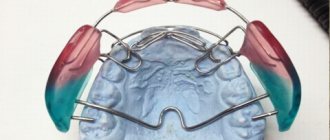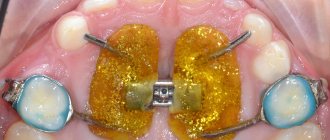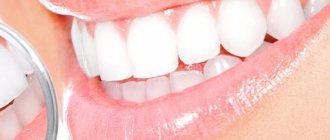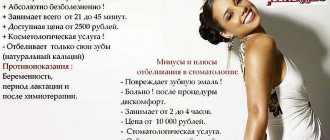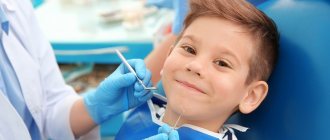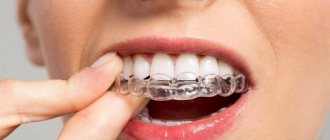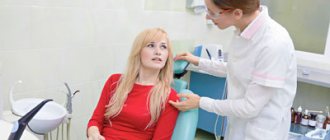1007
Occlusion defects and their treatment are the most difficult issues in dentistry.
To a large extent, because there is still no consensus among experts about what is most important in this problem - the condition of the maxillary joint, the relationship of the chewing teeth with each other, or the condition of the muscles and ligaments of the dentofacial apparatus.
General overview
Dr. Kois offers his perspective and approach to solving occlusion problems.
He developed a device called a deprogrammer, which, according to the developer, makes it possible to eliminate occlusion dysfunction relatively quickly and easily.
But before talking about this device, it is necessary to say a few words about one of the main parameters of the dentofacial apparatus - the central ratio (CR) of the TMJ.
The CS is the position of the MF in which the condyle is relative to the glenoid cavity with optimal occlusion.
A feature of the temporal mandibular joint is that the articular head can be in different positions. This provides the lower jaw with the ability to move in different directions - open, move back and forth and left and right.
The main question: what position should be taken as the initial one, ensuring correct occlusion when closing the jaws? For a long time, experts disagreed about what the position of the condyle should be during CS. Today it is believed that the optimal position of the head of the joint is the anterosuperior position.
The Kois device is a removable orthodontic device designed to automatically install the movable jaw in the center position. Or, in other words, a device that facilitates the registration of a CA.
Structurally, the device is a plastic base with a vestibular arch embedded in it, running outside the dentition and serving as a retainer. The base is made of acrylic, the vestibular arch is made of thin but durable wire.
The device is placed on the upper jaw. The plastic base has a platform (stop) that serves for contact with the incisors of the lower jaw. It is this platform, in contact with the “units” of the lower jaw, that ensures the installation of the dentofacial apparatus in the CS.
When wearing the deprogrammer for a long time, the masticatory muscles are programmed in such a way that installation in the centric relation, and, consequently, correct occlusion occurs automatically.
In essence, the device performs the same function as occlusal splints (splints).
Orthodontic methods of closing gaps in the absence of incisors and other techniques used in modern dentistry.
Visit here to learn more about the purpose of the HIP Plane Analyzer.
At this address https://www.vash-dentist.ru/ortodontiya/prikus/vyityazheniya-zuba.html we will talk about the need for teeth traction and how to carry out the procedure.
Duration of wearing and confirmation of results
You need to wear the Kois device until muscle deprogramming is completed, that is, until the old muscle memory is replaced by a new one. This usually takes two to four weeks.
The duration of wearing the device per day varies and mainly depends on the complexity of the malocclusion. Thus, some patients are advised to wear it for 6-8 hours, others – around the clock with the possibility of removal only for oral hygiene and eating.
For the reliability of the result, the initial contact point should always be marked when closing the jaws on a strip of articulation paper. If the initial contact is confirmed while closing the mouth, then the person has been deprogrammed.
Indications and contraindications
The device is indicated in the following cases:
- The need to reprogram the masticatory muscles to ensure correct occlusion.
- For diagnostic purposes, when it is necessary to establish the dental system in centric relation.
- With increased tooth abrasion. The device allows you to determine the type and cause of the pathology - occlusal dysfunction, bruxism or other parafunction.
- To control the height of the bite.
- If necessary, avoid premature contact of teeth.
Contraindications to using the device are:
- periodontitis of the lower incisors, manifested by their mobility (before using the device, mobility must be eliminated);
- gag reflex (to relieve it, you can try to reduce the area of contact of the acrylic base with the palate);
- the presence of inflammation in the TMJ (arthritis, arthrosis, etc.).
Important. Bruxism can be caused by neurological disorders. In these cases the device is useless. Patients with neurological deficits are advised to wear a mouth guard to prevent tooth wear.
Preparatory activities
Preparatory operations performed during treatment with a deprogrammer are largely determined by the individuality of the patient.
However, all the main parameters on which the patient’s occlusal status depends must be determined.
Risk assessment
Dr. Kois argues that for the successful treatment of dental anomalies, a correct approach to diagnosis is necessary, which consists of assessing the risks in all 4 areas that determine the functioning of the dentofacial apparatus - the biomechanical system, dentofacial, functional or periodontal.
The greatest difficulty is the assessment of functional (occlusal) parameters, since changes in the vertical position of the lower jaw cause its horizontal displacement.
Important parameters
The human dentofacial apparatus consists of 3 main components:
- joints (VNSJ);
- teeth;
- muscles and ligaments that move the LF.
In accordance with this, Dr. Kois suggests considering 3 positions when diagnosing occlusion dysfunction - P1, P2 and P3.
P1 determines the position of the joint, namely the condyle. Since its location is not strictly defined due to the structural features of the TMJ, there are difficulties in establishing the CS.
This may be MIP, myocentric or habitual occlusion if functionality is not impaired.
P2 affects the occlusion of teeth, P3 affects muscles and ligaments.
Questions for the patient
To determine the degree of occlusal risk a patient is exposed to, it is necessary to test them by asking 5 questions.
Depending on his answers, a conclusion is made about the presence or absence of occlusion dysfunction:
- Do you have trouble chewing gum? A positive answer (“yes”) may indicate limited chewing amplitude.
- Do you have difficulty chewing dry foods (such as bagels) that require a lot of chewing? The answer “yes” indicates occlusal dysfunction.
- Have you noticed any changes in the functioning of your dentition over the last 5 years? Increased wear of teeth, their mobility, formation of teeth, and weakness of the masticatory apparatus should be considered as changes.
It should be borne in mind that normal wear of enamel is 11 microns per year. That is, normally, 100 years should pass before a 1 mm thick layer of enamel wears out.
- Do you need to bite into your food more than once? An affirmative answer means dysfunction of the dentofacial apparatus.
- Do you have trouble sleeping? This refers to throwing off the blanket at night, movement disorders or restless legs. If the answer is positive, the presence of parafunction or neurological deficit can be assumed.
A positive answer to any of the questions indicates a certain degree of dysfunction. When conducting the test, it is important that the answers are made based on the normal state of the dentofacial apparatus, without taking into account the patient’s adaptation to a negative situation regarding teeth.
If he has adapted to pathological changes in the functioning of his dental apparatus (for example, he began to eat only soft foods) and answered “no” to the first 2 questions, this does not at all indicate the absence of pathology.
How the device for distalization of molars works and the timing of its wearing.
In this publication we offer characteristics of the permanent dentition.
Here https://www.vash-dentist.ru/ortodontiya/prikus/mehanizm-stanovleniya-molochnogo.html we will discuss methods for correcting primary occlusion.
Muscle deprogrammer AQUALIZER
AQUALIZER is a special dental splint in which water is placed. The design is used to achieve relaxation of the jaw muscles. The design is one of a kind, so dentists recommend it if a problem develops in the form of involuntary teeth grinding.
The advantage of the system is its versatility. This is achieved in a simple way - the water that gets into the splint after the device is installed on a person, itself adapts to the structural features of the patient’s jaw. In this case, the person’s discomfort and pain go away almost immediately.
Your doctor will help you buy the AQUALIZER deprogrammer. The appointment is made after consultation. The price of an equalizer depends on the model.
The tire is different:
- effective pain relief;
- muscle relaxing effect;
- performing their tasks with an uncertain diagnosis.
Manufacturing stages
Manufacturing a Kois deprogrammer includes the following operations:
- Obtaining alginate impressions from both jaws.
- Casting from plaster model impressions.
- Installation of models into the articulator with complete coincidence of fissures and tubercles.
- Making a vestibular arch from wire and installing it in a model of the upper jaw.
- Pouring the acrylic base. In this case, the vestibular arch is imprinted into the base.
- Trimming the base to form a platform (stop) for the mandibular incisors. Its width should be 3 mm, and its height should provide a bite gap in the range of 1-1.5 mm.
- The final stage is polishing the deprogrammer.
Preparatory stage
In preparation for the procedure, an individual approach is used, determined by the peculiarities of the anatomical structure of the patient’s jaw. The quality of the correction depends on the accuracy of the readings obtained, so the doctor must competently assess potential risks and pay attention to diagnostic procedures. Dr. Kois's theory identifies five treatment risk conditions, ranging from acceptable functionality to neurological impairment and bruxism. Among the parameters identified during the research, three indicators were identified:
- Joint position;
- Chewing unit ratio;
- Specifics of the operation of the chewing system guide.
To make a diagnosis, a standard questionnaire is used, which includes five points and allows one to assess the severity of changes, as well as draw a conclusion about the presence of signs of dysfunction. In addition, establishing a dialogue between the doctor and the patient contributes to a better understanding of the need to follow recommendations for oral care and calculate the permissible load, which ultimately allows the latter to get rid of constant discomfort.
Manufacturing Features
Preparing a deprogrammer is a multi-stage process, which is determined by the high demands placed on the accuracy of the product. To develop the correct apparatus, it is necessary to take impressions from the upper and lower rows, and then place the plaster models in the articulator. To make a vestibular arch, a wire is used, the configuration of which eliminates contact with the surface of the units. The horseshoe-shaped base is created from polymer and provides a platform for the lower incisors. The finished structure is processed and polished, after which the doctor checks the compliance of the dimensions and tries the device on the dentition. It is worth emphasizing that the contact area should have a narrowed area and affect the midline of one of the frontal elements of the lower section.
The device works the entire time it is in the mouth. The principle of operation is based on registering the occlusion in the correct position and changing the contacts of the teeth. With the help of this device, neuromuscular coordination changes, joint and muscle pain goes away, the functioning of the TMJ improves, and the chewing load is distributed evenly. After two to three weeks of wearing, the discomfort caused by the abnormal development of the TMJ is eliminated, as well as the normalization of sleep and the restoration of the natural state of the jaw region during wakefulness.
Principle of use
Before using the device, be sure to check the width of the platform. If it exceeds 3 mm, it must be corrected by abrasive treatment.
The device is placed on the upper jaw, and if everything is done correctly, it should be securely fixed on it, thanks to the shape of the base and the tight-fitting vestibular arch.
The patient is asked to take a comfortable position in the chair and press the articulation paper with his teeth, moving the jaw left and right, back and forth.
It is necessary to check the bite separation, which should be up to 1.5 mm. The contact of the platform with the mandibular incisors should be along their midline. If these conditions are not met, the device is corrected by removing excess material .
If necessary, occlusion correction is carried out by creating correct fissure-tubercle contacts of the chewing teeth, holding the LF in centric relation.
In the video, a specialist talks about the design and use of the Kois deprogrammer.
